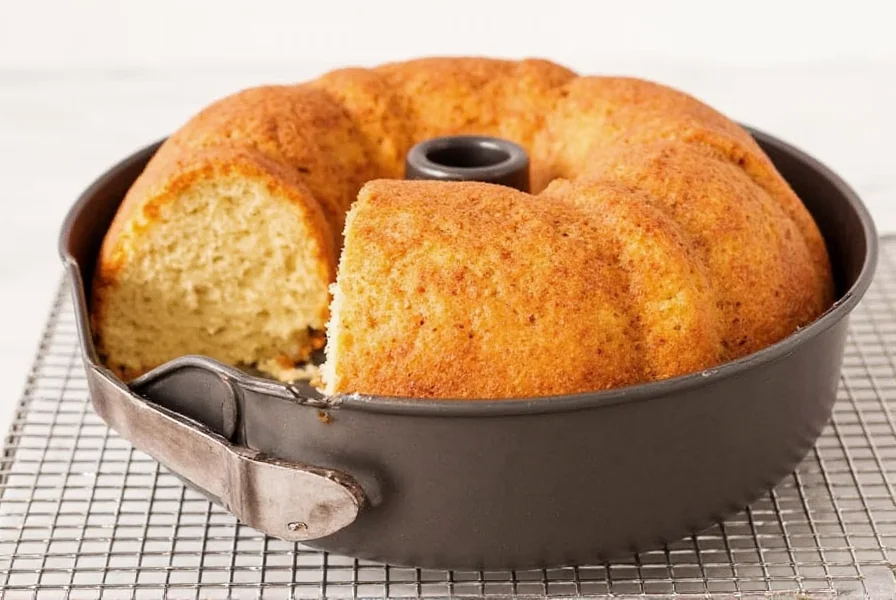Nothing says comfort like the aroma of cinnamon pound cake baking in your kitchen. This beloved dessert elevates the traditional pound cake with warm spice notes that complement its rich, buttery texture. The magic happens when quality ingredients meet precise technique—starting with room-temperature butter properly creamed with sugar to create that signature dense yet tender crumb.
The Science Behind Perfect Cinnamon Pound Cake
Understanding the chemistry of your ingredients transforms good baking into exceptional results. Real butter (not margarine) provides superior flavor and texture due to its water content evaporating during baking, creating fine air pockets. Eggs at room temperature emulsify better with the fat, preventing curdling. Cake flour's lower protein content compared to all-purpose flour yields a more delicate crumb—essential for that melt-in-your-mouth quality.

Essential Ingredients Breakdown
| Ingredient | Function | Pro Tip |
|---|---|---|
| Unsalted butter | Creates rich flavor and tender crumb | Must be at exactly 65°F (18°C) for optimal creaming |
| Granulated sugar | Aerates batter during creaming | Mix with cinnamon before adding to butter for even distribution |
| Eggs | Provides structure and moisture | Add one at a time, fully incorporating before next addition |
| Cake flour | Yields finer crumb than all-purpose | Sift with leavening agents 3 times for maximum aeration |
Step-by-Step Baking Process
Begin by preheating your oven to 325°F (163°C)—lower than standard baking temperatures prevents the dense batter from browning too quickly while the center cooks. Grease and flour a 10-inch Bundt pan thoroughly, as cinnamon pound cake's richness makes it prone to sticking.
The creaming stage requires patience: beat butter and 1¾ cups sugar with 2 tablespoons cinnamon for 5-7 minutes until pale and fluffy. This incorporates crucial air bubbles that can't be replicated later. Add eggs one by one, scraping the bowl frequently. Alternate adding sifted dry ingredients with ¼ cup whole milk in three additions, beginning and ending with dry ingredients.

Mastering the Cinnamon Swirl
For the signature marbled effect, reserve ½ cup of batter. Mix with 2 tablespoons melted butter, 3 tablespoons sugar, and 1½ tablespoons cinnamon. Pour half the plain batter into the prepared pan, spoon the cinnamon mixture over it, then top with remaining batter. Use a knife to gently swirl—overmixing creates muddy layers. This technique creates distinct pockets of spice without compromising structure.
Avoiding Common Pitfalls
Most failed cinnamon pound cakes suffer from these preventable issues:
- Tunneling: Caused by overmixing after adding flour—stir just until combined
- Dense texture: Usually from cold ingredients or insufficient creaming time
- Sunken center: Oven temperature too high or underbaking—use an instant-read thermometer (200°F/93°C internal temp)
- Bitter spice notes: Old cinnamon or excessive quantity—use fresh, high-quality cinnamon
Storage and Serving Recommendations
Wrap cooled cake tightly in plastic wrap within 2 hours of baking to preserve moisture. Properly stored at room temperature, it stays fresh for 4 days. For longer storage, freeze whole or sliced in vacuum-sealed bags for up to 3 months. Always bring to room temperature before serving—never microwave, as this creates uneven texture.
Pair with freshly brewed coffee or vanilla ice cream. For elegant presentation, dust with cinnamon-sugar mixture or drizzle with bourbon-infused glaze (¼ cup powdered sugar + 1 tablespoon bourbon).
Adapting for Dietary Needs
Gluten-free versions work best with a quality 1:1 substitute flour blend containing xanthan gum. Increase baking powder to 1½ teaspoons to compensate for heavier texture. For dairy-free, use refined coconut oil instead of butter and almond milk—but expect slightly less richness. Note that substitutions typically reduce shelf life by 1-2 days.
Frequently Asked Questions
How do you keep cinnamon pound cake moist after baking?
The key to moisture retention is proper cooling and storage. Allow the cake to cool in the pan for exactly 15 minutes (longer causes sogginess, shorter causes sticking), then transfer to a wire rack. Once completely cool, wrap tightly in plastic wrap. The cake's high butter content naturally preserves moisture, but adding 2 tablespoons of sour cream to the batter enhances tenderness without altering flavor.
Why does my cinnamon pound cake crack on top?
Surface cracking occurs when the oven temperature is too high, causing the exterior to set before the interior finishes rising. Lower your oven by 25°F from standard recipes (bake at 325°F instead of 350°F). Also ensure your leavening agents are fresh—expired baking powder creates uneven rise. A water bath in the oven (place pan of water on lower rack) adds humidity that prevents premature crust formation.
Can I make cinnamon pound cake ahead of time?
Yes, cinnamon pound cake actually improves in flavor after 24 hours as the spices meld. Bake up to 2 days in advance and store wrapped at room temperature. For best results, prepare the batter, pour into pan, and refrigerate overnight before baking—this slow hydration process enhances texture. Never freeze a freshly baked cake; allow it to mature at room temperature for one day first.
What's the difference between cinnamon swirl and cinnamon streusel pound cake?
Cinnamon swirl incorporates the spice directly into a portion of the batter, creating marbled layers throughout. Cinnamon streusel features a crumbly topping made with cold butter, flour, sugar and cinnamon sprinkled on before baking. Swirl provides consistent spice distribution, while streusel adds textural contrast with a crunchy, caramelized surface. Many bakers combine both techniques for maximum flavor impact.











 浙公网安备
33010002000092号
浙公网安备
33010002000092号 浙B2-20120091-4
浙B2-20120091-4